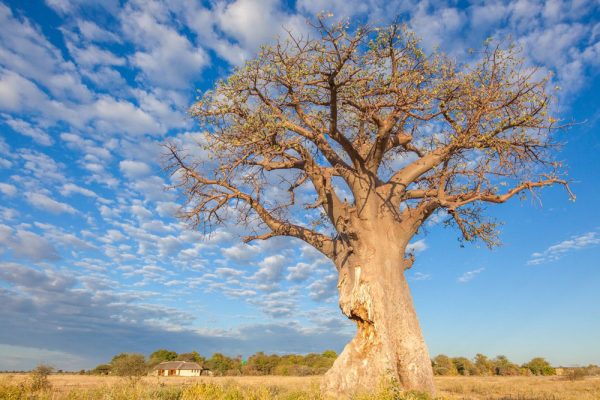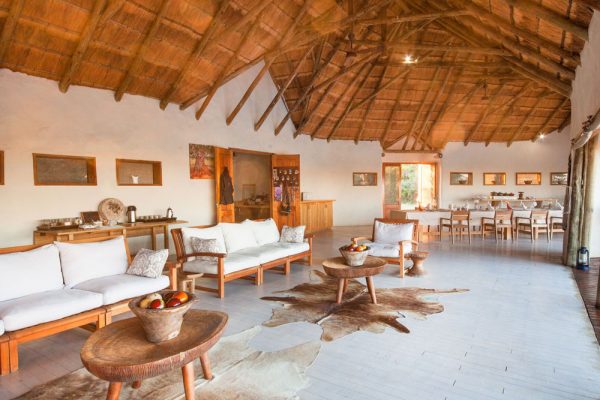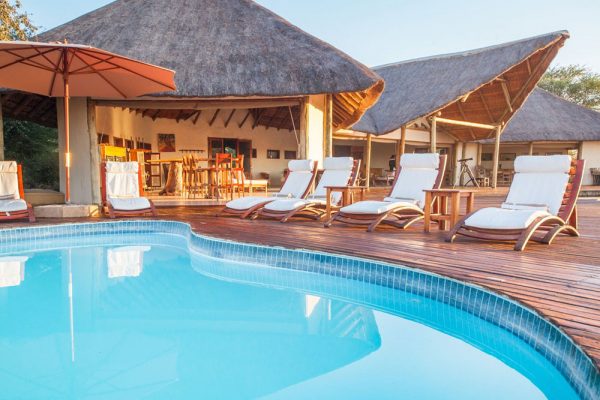Nxai Pan is located on the western edge of the fossil pan from which the camp takes its name. The camp faces east over the open grasslands of the pans. The biggest draw to Nxai Pan National Park are the zebras that migrate by the thousands to the area – the second largest land animal migration in Southern Africa.
Day trips to Baines’ Baobabs are highly popular, and include a picnic lunch at the site. These age-old trees were immortalised in paintings by the artist and adventurer Thomas Baines in 1862. If you were to compare Baines’ paintings to the scene today, you would find that after 150 years, the trees are nearly identical – testament to the age of these magnificent giants. Another classic activity at Nxai Pan is a walk with one of the San bushmen trackers, an informative walk that takes place within the camp’s footprint. Learn about how the San used to live nomadically: how they used to hunt, gather food, water sources, and which plants were used for medicinal purposes. Their wealth of true bush knowledge is unparalleled, and one of our guests’ favourite experiences at our desert camps. The camp’s nine tents face the waterhole, with the main area being the central best place for game viewing from the water hole. The minimalistic white-washed design of the camp is in keeping with the surrounding white salt pans. The main areas of the camp include an expansive open-air lounge and dining area, with a bar, pool and curio shop. Nxai Pan is a 100% solar-operated camp.



